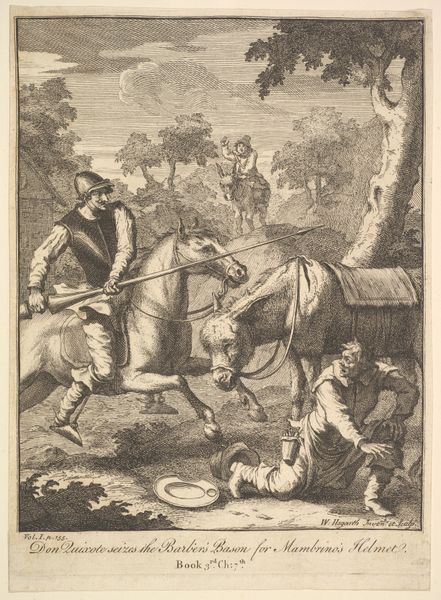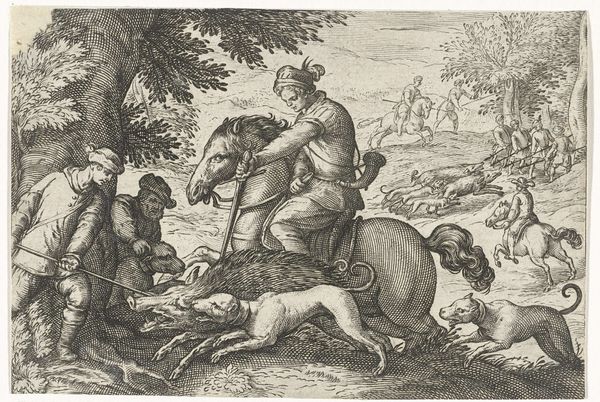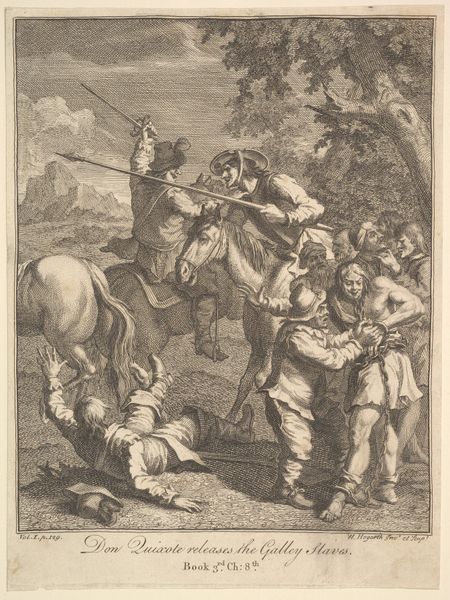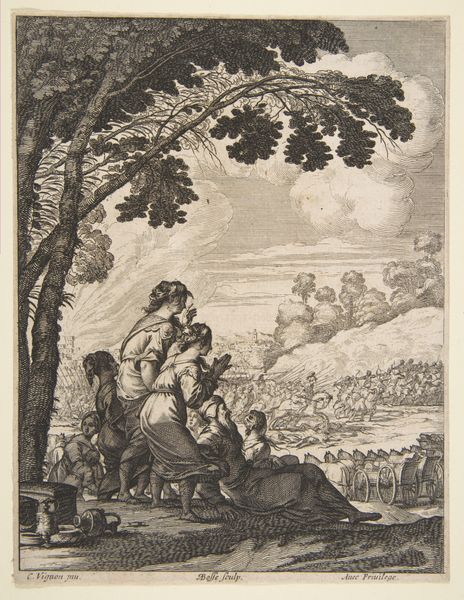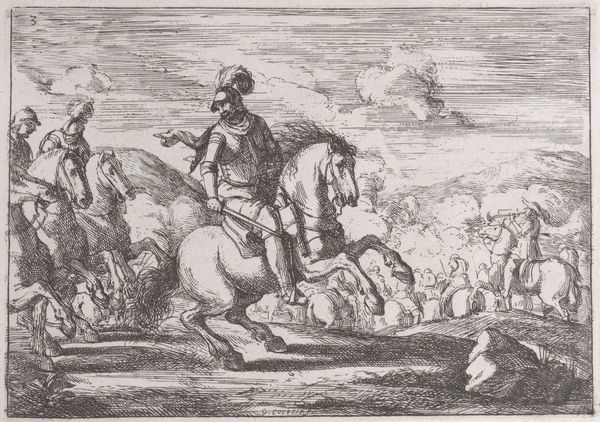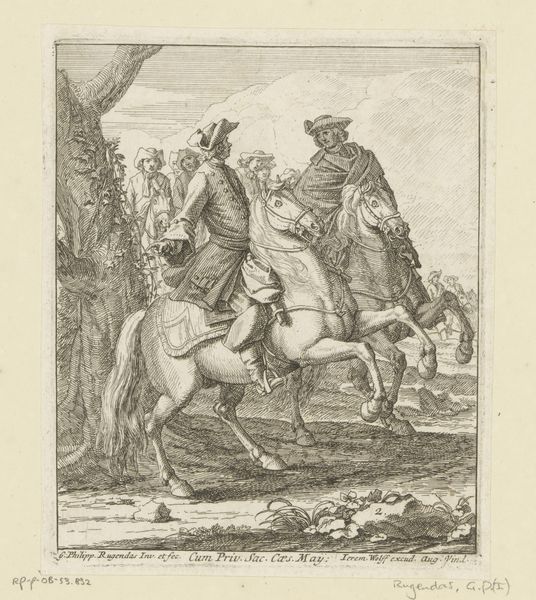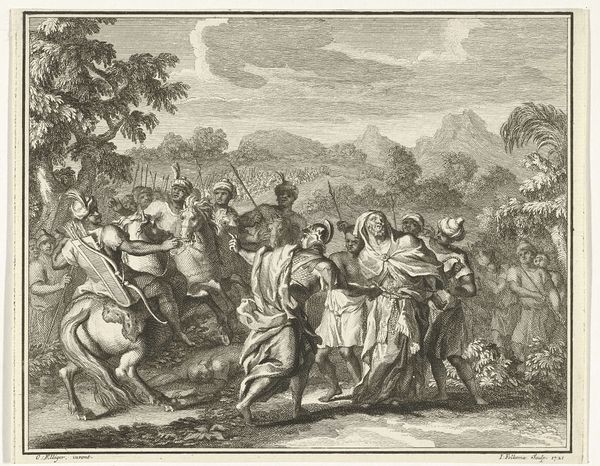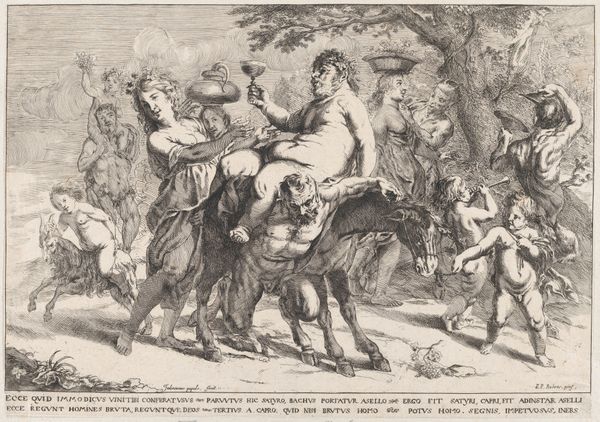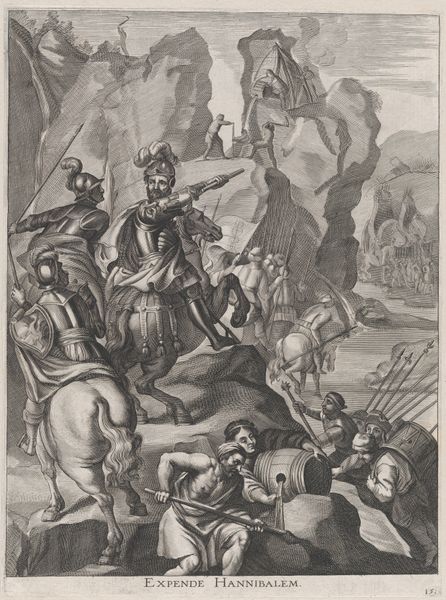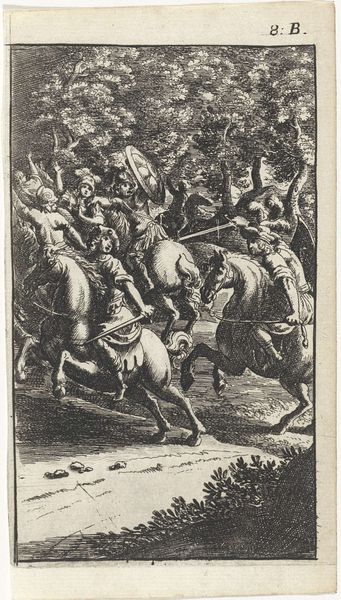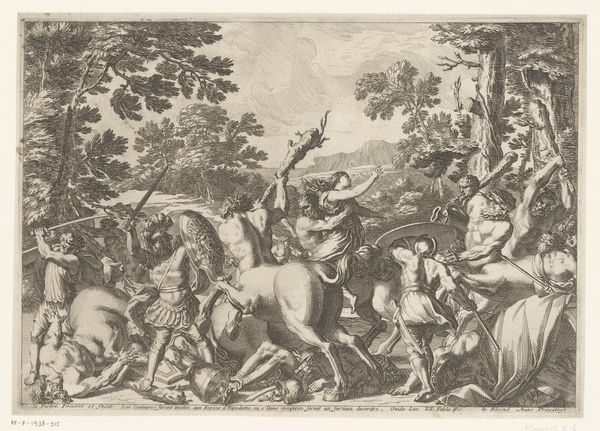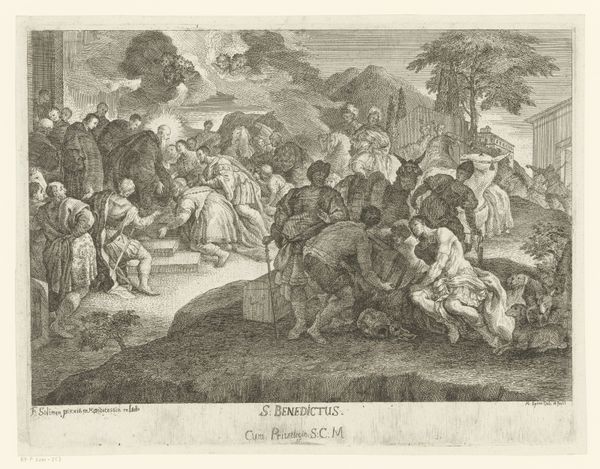
Plate 29: Germany conquered by Drusus; from Guillielmus Becanus's 'Serenissimi Principis Ferdinandi, Hispaniarum Infantis...' 1636
0:00
0:00
drawing, print, engraving
#
drawing
#
baroque
# print
#
landscape
#
figuration
#
horse
#
history-painting
#
engraving
Dimensions: Sheet (Trimmed): 15 11/16 × 11 7/8 in. (39.8 × 30.1 cm)
Copyright: Public Domain
Curator: Good morning. We’re looking at "Plate 29: Germany conquered by Drusus" by Jacob Neeffs, created in 1636. It’s currently housed here at the Metropolitan Museum of Art. Editor: Oof. Stark, isn’t it? Like a scene ripped from some historical nightmare. All that dark, dense engraving gives it a claustrophobic feel. Even the sky seems oppressive. Curator: Indeed. The composition uses a distinct foreground and background. In the foreground, we have the figures associated with the defeated Germany, while the background provides a wider vista of the conquering Roman presence. Note the intricate use of line weight; it creates volume and directs the viewer's eye. The textures, meticulously rendered through cross-hatching, demonstrate technical mastery. Editor: "Technical mastery"—absolutely! But it's what that technique *conveys* that hits you, right? Look at the contrast: Drusus, all pomp and armour, perched high on that horse, versus the subjugated people grovelling at his feet. Their despair practically jumps off the print! Curator: Precisely. The artist employs symbolic gestures – the presentation of arms, the bound prisoners – all reinforcing the theme of Roman dominance. It’s an allegorical representation, where Germany is personified as a defeated figure offering submission. Editor: It feels so…calculated. The staging, the almost theatrical poses. Even the horse seems to be saying, “Yeah, we won." Makes you wonder about the artist's intent, doesn't it? To glorify conquest? To simply record it? Curator: One could argue that it reflects the Baroque fascination with power and grandeur, and also the patronage system. Neeffs, in creating this for a book celebrating Ferdinand, was likely expected to depict Roman triumphs favourably. But art is rarely that simple, right? Even in this apparent celebration of conquest, the raw emotion of the conquered lingers. Editor: Absolutely. It sticks with you. I keep thinking about the faces in the crowd, the eyes looking up. Hard to just shrug off something so loaded with power dynamics and suffering. Curator: It’s an image that demands attention. By looking closely at the formal elements we understand how an artwork of the 17th century might represent and justify imperial dominance. Editor: Definitely gives you pause. Even centuries later, those echoes of power, of subjugation, refuse to stay quiet.
Comments
No comments
Be the first to comment and join the conversation on the ultimate creative platform.
